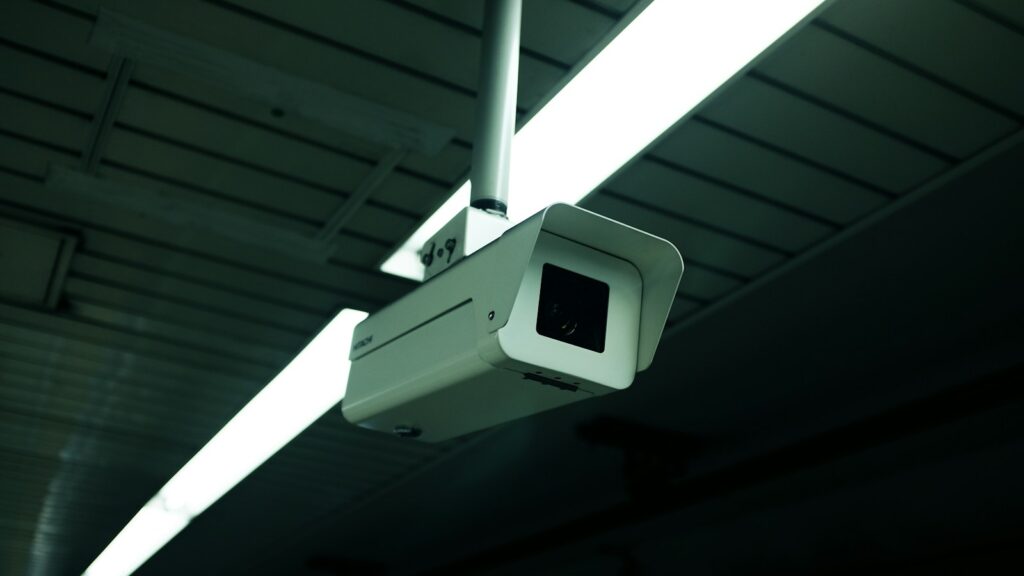A recent survey by the Chartered Management Institute (CMI) found that a third of UK firms are using ‘bossware’, systems that monitor employee activity. As champions of people, how can HR ensure that the technology helps, rather than harms, workplace culture and team performance? Workplace surveillance always involves an exercise of power, here by managers. In a complex world where good performance calls for autonomy in thought and action, close monitoring risks fairness, wellbeing and productivity.
Organisations have few qualms about monitoring their employees
Arguments for workplace surveillance
Given a societal backdrop of ubiquitous CCTVs and smartphones, organisations have few qualms about monitoring their employees. Boardroom rationale for knowing how people spend their time typically revolves around security, productivity and safety.
Security – By monitoring, say, all log-ins to a system, a firm may discover hackers trying to steal corporate secrets or hold the firm to ransom. Email scanning may halt viruses before they infect systems. Recording calls may limit attacks via social engineering or deep fakes.
Productivity – Managers may believe that good performance is secured by measuring, for example, the periods team members spend logged on to corporate systems, the volume of emails sent each day, or how long people take to turn around customer requests.
Safety – Geolocation systems may encourage safety by tracking vehicle speed, driving behaviours or time behind the wheel. Microphones and body cameras may detect escalating or violent interactions. Wearables track heart rate and blood pressure and may pinpoint the risks of strenuous labour.
Remote work encourages monitoring
Naturally, Covid reinforced the case for workplace monitoring. Many employees now operate remotely, where the lack of overt signals about effort – such as being at one’s desk rather than gossiping by the photocopier – is seen to justify more deliberate surveillance.
Since the pandemic, technology has allowed much closer surveillance.
Personal intrusions
At the same time, surveillance blurs public and private spaces and can be, or at least be taken as, an abuse of management power. The message to employees is, ‘We do not trust you, so we are watching over you.’
Since the pandemic, technology has allowed much closer surveillance. No longer are firms measuring simply when an employee boots up the corporate VPN or clocks on for a shift.
Organisations now monitor keystrokes, mouse movements and clicks. Screenshots reveal everything that appears on a computer. Sensors pick up time away from the desk on visits to the kitchen or lavatory. Wearables track conversations.
During video calls employers use facial recognition to monitor attention, and then store audio and images of what are often confidential discussions. Eye movements are recorded in lorry cabs.
Alongside email, organisations can now access all texts and calls, which are often more informal or personal in nature. Some firms even install surveillance apps on employees’ own devices, without being clear what data is collected or for what purpose.
Last year, one Virgin Atlantic flight attendant was fired after the airline accessed the hotel’s electronic key and CCTV footage and found the man had called a Grindr date before requesting ‘fatigue leave’. The Fair Work Commission in Australia overturned Virgin’s decision as the firm’s action was deemed an invasion of privacy.
Risks of workplace surveillance
Despite the arguments in favour of security, productivity and safety, workplace surveillance carries risks for both the employee and employer.
Unfair treatment
Judgments about what is reasonable privacy must account for the experiences of the person being monitored. Certain groups and individuals are more exposed than others to the consequences of workplace surveillance.
For example, studies show that women are more wary than men of giving up health data – unsurprising with new abortion laws in the United States.
A person disliked by the boss is clearly more at risk, as may be someone with a history of poor health. Surveillance can easily be turned against a person or group.
AI aggravates risks
Much surveillance is now powered by artificial intelligence (AI). Whilst managers arguably should not be entrusted with the intimacies of colleagues’ work or home lives, automated analysis, decision-making and predictions are even more worrisome.
In call centres, AI records conversations and agents are penalised for not sticking to a script. The technology also flags when certain words, such as ‘union’, are written in emails. We know that AI interpretations of behaviour are often based on skewed training data: decisions appear neutral, yet are prejudiced.
When surveilled in this way, how do people act? They game the system with mouse jigglers and other foils, just to meet pointless KPIs. What are they not doing? Productive work.
Productivity myth
With surveillance, managers shoot themselves in the foot. Contrary to what is intended, close monitoring often harms productivity.
What surveillance measures – log-ins, keystrokes, time in front of a computer – has little bearing on meaningful performance. The value of an employee to colleagues, customers or the bottom line can seldom be reduced to quantifiable metrics.
Likewise, surveillance does not evaluate kindly the time spent thinking with pencil and paper, the creative process of taking a walk, conversations with peers, or extra minutes spent to answer a complex query.
This mismatch of value and measures renders evaluations for firing, promotion and other actions ill-informed and possibly unfair. The black box of AI inevitably elevates such risks.
And, when surveilled in this way, how do people act? They game the system with mouse jigglers and other foils, just to meet pointless KPIs. What are they not doing? Productive work.
Such meaningless activity also leaves employees bored, resentful and alienated – hardly factors in good performance.
Control lowers morale
The architect of bureaucratic ‘scientific management’, Frederic Winslow Taylor, distinguished sharply between mental and manual effort – the planning of managers versus the execution by workers.
But modern work cannot be separated this way: complexity and innovation call for creativity and autonomy on everyone’s part.
Workplace monitoring harks back to Taylor’s stopwatch. When you treat people as cogs in a machine, performance stalls. Recent research by the US Government Accountability Office shows how surveillance lowers morale, elevates stress and harms wellbeing.
Weak leadership and failing culture
Crucially, studies have shown that surveillance harms intrinsic motivation, that is, a person’s tendency to seek out novelty, explore and learn, and exercise strengths. Intrinsic motivation is vital to complex work, which begs the question: Is surveillance merely a sign of weak leadership and a failing culture?
Surveillance to punish exceptions is a costly game of whack-a-mole
How to practise sensible surveillance
Clearly managers have to secure IT systems, ensure health and safety, and learn whether their people are turning up for work. But close surveillance hurts team members and thwarts the very aims for which it is designed.
When considering surveillance, HR professionals may be guided by several principles to safeguard morale and productivity:
1. Involve everyone
Agree with team members on what (if any) surveillance will enable meaningful performance and development. As with all change, early involvement reduces later conflict.
2. Be transparent
Make clear to everyone what data is collected and why, and how it will be shared and used. Studies show that surveillance without reason lowers intrinsic motivation.
3. Design for the majority, not the exception
Collect data to support high performers. Surveillance to punish exceptions is a costly game of whack-a-mole that wastes managers’ time, risks overreach and harms morale.
4. Use data for support only
Whilst monitoring for disciplinary action is unwelcome, people may be open to surveillance that enables their growth. This also keeps data collection proportionate to a justifiable need.
5. Secure cooperation via culture
Move beyond bureaucratic surveillance to secure cooperation through a culture of trust. Open dialogue fosters engagement and – good news – will reveal shortfalls hidden from even the most oppressive monitoring.
An exercise in power, surveillance is a forceful means of control that rarely enhances productivity. Managers with the confidence to step back will secure better performance by nurturing the intrinsic motivation of their team members.
Your next read: Five pitfalls of measuring workplace productivity






